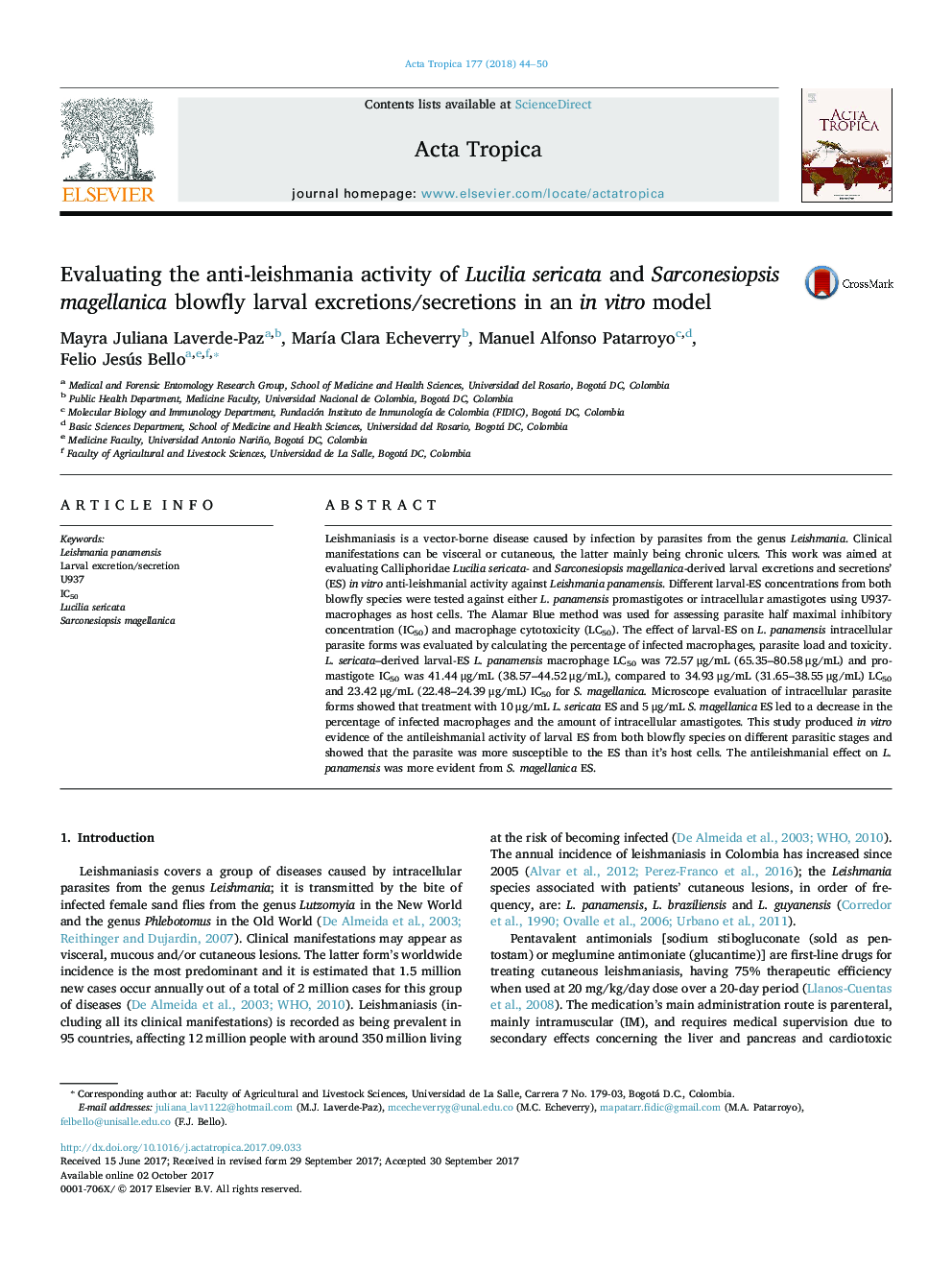| کد مقاله | کد نشریه | سال انتشار | مقاله انگلیسی | نسخه تمام متن |
|---|---|---|---|---|
| 5670983 | 1592747 | 2018 | 7 صفحه PDF | دانلود رایگان |

- The anti-Leishmania activity of larval-ES from two blowflies was evaluated.
- The toxic effect on promastigotes was higher than the one on macrophages.
- A relevant reduction in the infection parameters with larval-ES was demonstrated.
- The anti-Leishmania effect was relatively more drastic with ES from S. magellanica.
Leishmaniasis is a vector-borne disease caused by infection by parasites from the genus Leishmania. Clinical manifestations can be visceral or cutaneous, the latter mainly being chronic ulcers. This work was aimed at evaluating Calliphoridae Lucilia sericata- and Sarconesiopsis magellanica-derived larval excretions and secretions' (ES) in vitro anti-leishmanial activity against Leishmania panamensis. Different larval-ES concentrations from both blowfly species were tested against either L. panamensis promastigotes or intracellular amastigotes using U937-macrophages as host cells. The Alamar Blue method was used for assessing parasite half maximal inhibitory concentration (IC50) and macrophage cytotoxicity (LC50). The effect of larval-ES on L. panamensis intracellular parasite forms was evaluated by calculating the percentage of infected macrophages, parasite load and toxicity. L. sericata-derived larval-ES L. panamensis macrophage LC50 was 72.57 μg/mL (65.35-80.58 μg/mL) and promastigote IC50 was 41.44 μg/mL (38.57-44.52 μg/mL), compared to 34.93 μg/mL (31.65-38.55 μg/mL) LC50 and 23.42 μg/mL (22.48-24.39 μg/mL) IC50 for S. magellanica. Microscope evaluation of intracellular parasite forms showed that treatment with 10 μg/mL L. sericata ES and 5 μg/mL S. magellanica ES led to a decrease in the percentage of infected macrophages and the amount of intracellular amastigotes. This study produced in vitro evidence of the antileishmanial activity of larval ES from both blowfly species on different parasitic stages and showed that the parasite was more susceptible to the ES than it's host cells. The antileishmanial effect on L. panamensis was more evident from S. magellanica ES.
176
Journal: Acta Tropica - Volume 177, January 2018, Pages 44-50